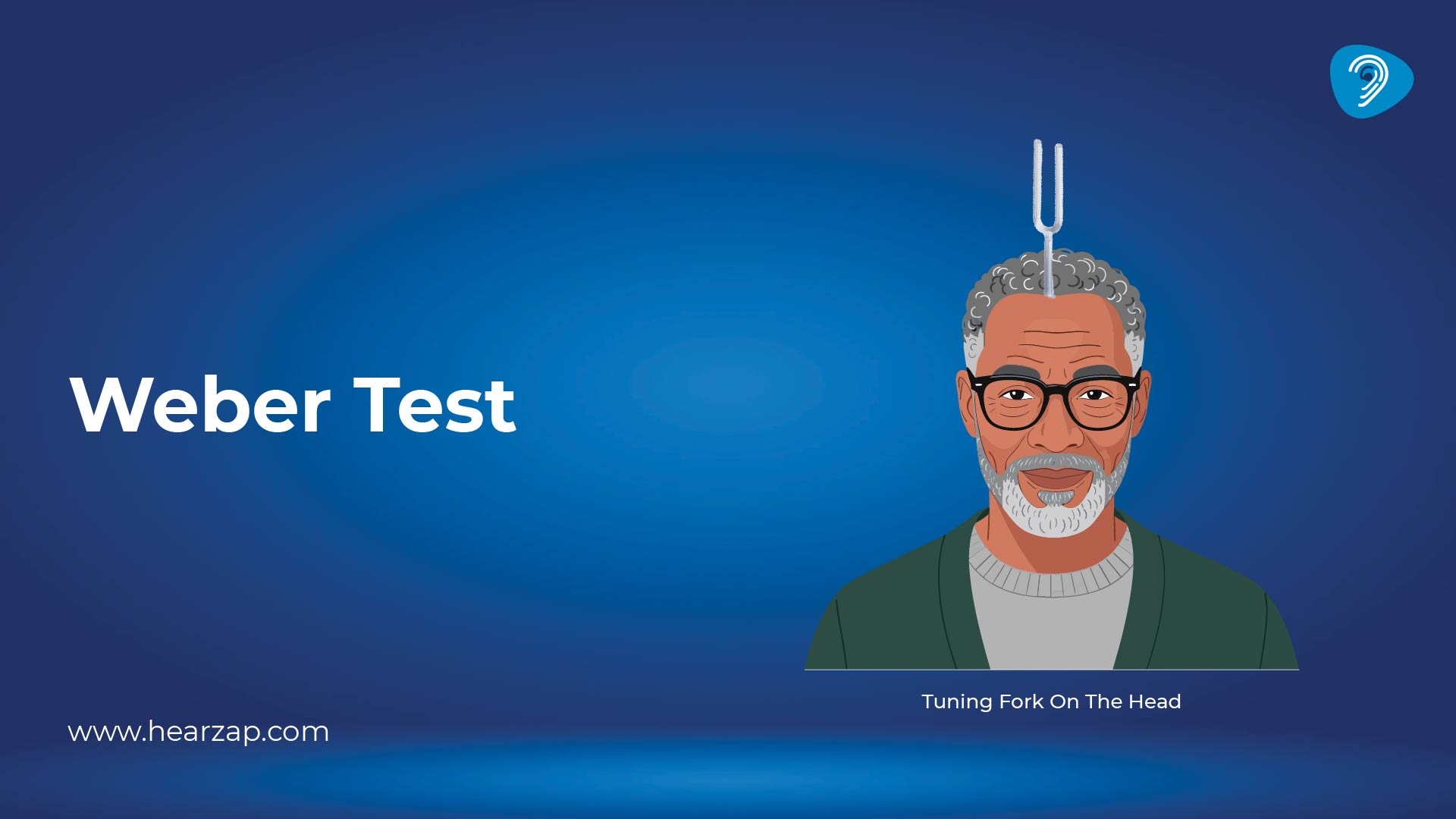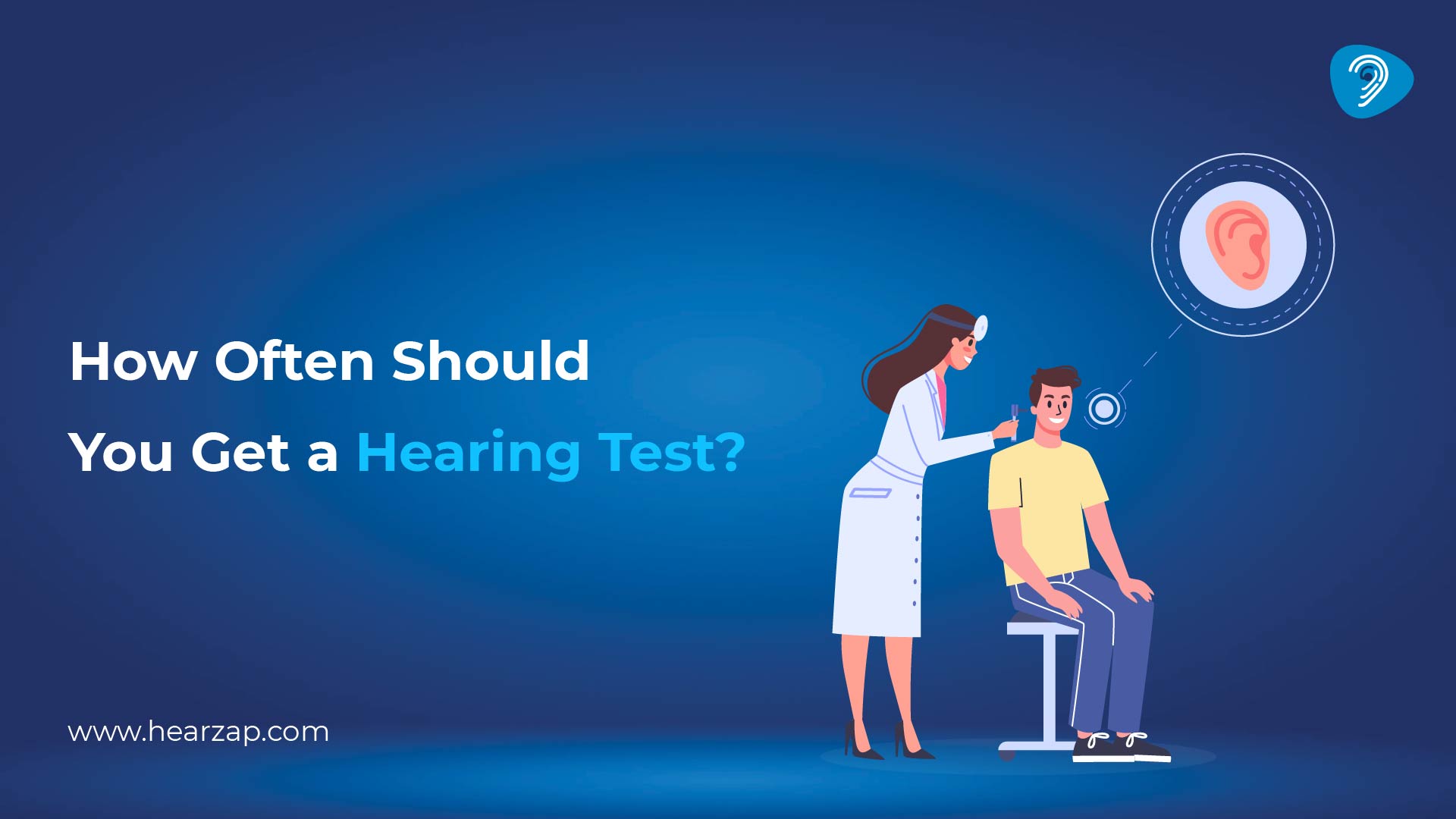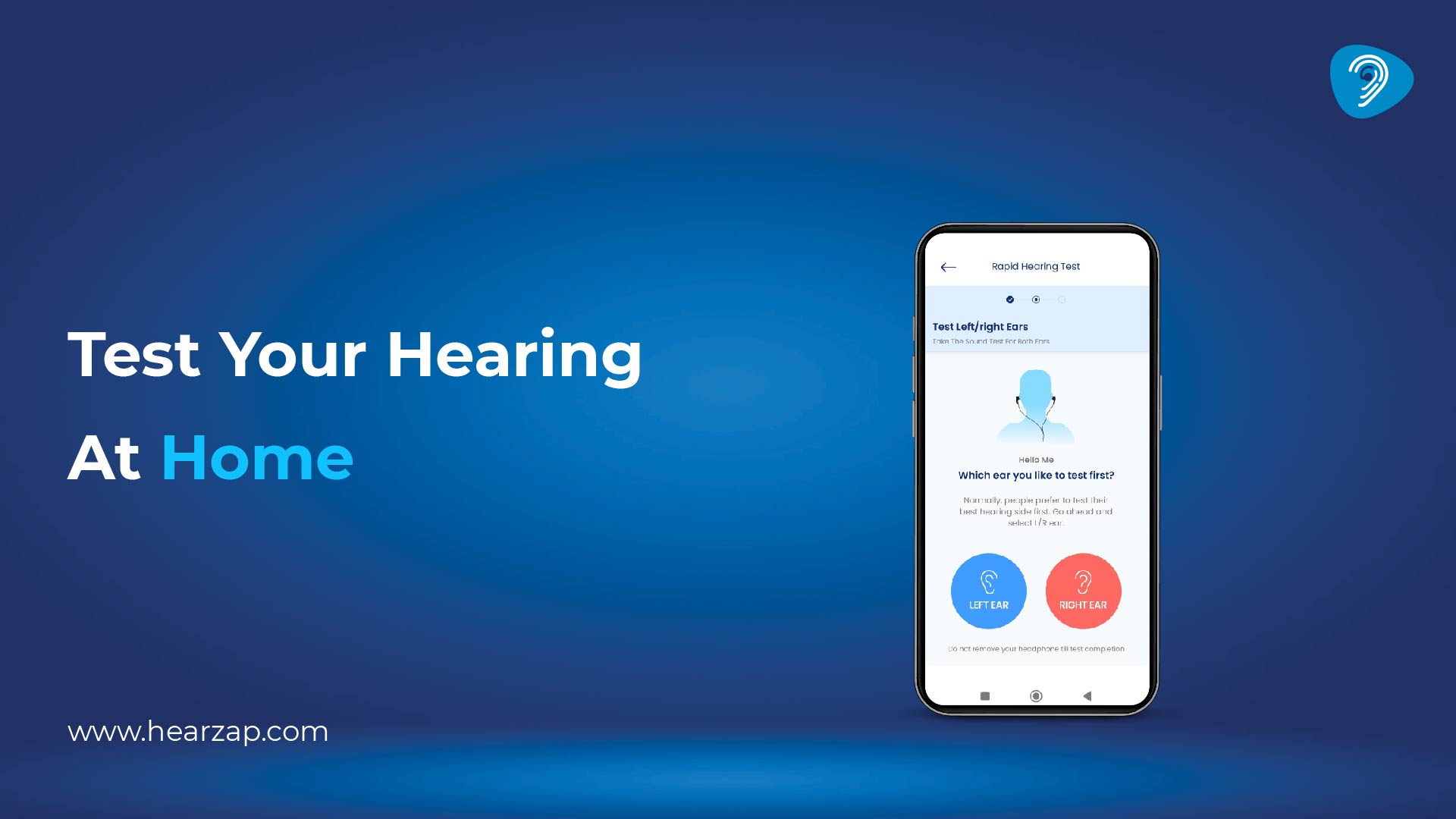HEARING TEST
Weber Test: Understanding What This Simple Hearing Check Reveals
By Team Hearzap | Nov. 24, 2025

If a person starts to perceive alterations in their auditory perception—such as one ear feeling louder, the other ear receiving softer sounds, or otherwise—ear, nose, and throat specialists usually perform simple examinations as their first step. The Weber test is one of the most significant among them. Though it takes only a few seconds, it provides valuable insight into the type and side of hearing loss a person may have.
This blog explains what the test is, how it works, and why it remains a reliable tool in diagnosing both conductive and sensorineural hearing problems.
What Is the Weber Test
The Weber test definition describes it as a tuning fork test that checks whether sound is heard better in one ear or equally in both. It helps identify whether a hearing issue is coming from the middle/outer ear or from the inner ear.
In simple terms, the Weber test asks the ear:
“Do both sides hear this the same way?”
Because many hearing conditions affect one ear more than the other, this test helps doctors quickly detect differences.
Although unrelated, the Kraus Weber test (a physical fitness assessment) occasionally gets confused with the hearing Weber test, but the two have nothing in common.
Why the Weber Test Matters
Patients often come in saying something “feels different” in one ear—fullness, imbalance, or unequal hearing. The Weber test helps answer an important question early on: Which side is affected, and how?
That’s why ENT doctors commonly perform the Weber test alongside the Rinne test. Together, Weber and Rinne test interpretation gives a clearer picture of the type of hearing loss involved.
How the Weber Test Is Performed
The Weber test procedure is simple, quick, and painless:
- A tuning fork (usually 512 Hz) is gently struck to create vibration.
- The base of the fork is placed on the middle of the forehead, the top of the head, or the upper front teeth.
- The patient is asked: “Where do you hear the sound—left ear, right ear, or both equally?”
That single question gives important information about hearing pathways. There’s no discomfort, and the entire test takes only a few seconds.
What the Weber Test Tells Doctors
Understanding weber test interpretation is key:
- Sound is heard equally in both ears: This usually suggests normal hearing or symmetrical hearing loss.
- Sound is heard louder in the right or left ear: This helps determine whether the problem is conductive or sensorineural.
If the sound is louder in the affected ear, it often points to conductive loss (like wax, fluid, or infection).
If the sound is louder in the better ear, it suggests sensorineural loss on the opposite side.
Because of this, the test doesn’t just show that something is wrong—it indicates which side and what type of issue may be happening.
What the Weber Test Can Help Detect
Doctors use the Weber test when evaluating:
- One-sided hearing loss
- Persistent fluid in the middle ear
- Ear infections
- Sudden sensorineural hearing loss
- Earwax blockage
- Eardrum problems
- Possible nerve-related changes
On its own, it does not diagnose a condition, but it guides what other tests should follow.
Weber and Rinne: Why They’re Used Together
The Weber test reveals which ear is affected.
The Rinne test reveals how that ear is hearing through different pathways.
Together, Weber and Rinne test interpretations help to determine:
- Whether hearing loss is conductive
- Whether it is sensorineural
- Whether both ears are affected
- Whether further tests like an audiogram are needed
This pairing is one of the quickest and most reliable bedside screening tools in ENT practice.
Limitations of the Weber Test
Although extremely helpful, the Weber test has its limits:
- It cannot measure the degree of hearing loss.
- It may be less clear in mild or mixed hearing loss.
- It must be interpreted with patient history and other examinations.
- Still, it remains widely used because it is so fast and informative.
Why Patients Appreciate This Test
When the hearing test is easy, non-invasive, and instantaneous, patients regularly feel more at ease. The Weber test is just the right one:
- No needles
- No machines
- No discomfort
- No preparation needed
It lessens worry by providing immediate understanding of which ear has a problem and what type of problem it might be.
Final Thoughts
The webers test may seem like a small step, but it plays a big role in the early evaluation of hearing problems. The combination of quick assessment, simple technique, and clear results makes it a reliable tool in everyday ENT practice. With the right weber test interpretation, doctors can decide whether the problem lies in the middle ear or the inner ear and what further testing is needed.
Even though it’s only one part of the hearing-exam process, the Weber test often gives patients their first clear understanding of what’s happening inside the ear—and that clarity is the starting point for proper care.
FAQs
What is Kraus Weber test?
The Kraus Weber test is a simple physical fitness assessment that measures flexibility and core strength, not related to hearing or ear tests.
How to do Rinne and Weber test?
Both tests use a vibrating tuning fork — Rinne compares hearing through air and bone, while Weber checks which ear hears the sound more clearly.
How to do Weber test?
A vibrating tuning fork is placed on the centre of the forehead or head, and you’re asked which ear hears the sound louder.
What is a positive Weber test?
A positive Weber test means the sound is louder in one ear, helping doctors tell whether the hearing loss is conductive or sensorineural.
Why is Weber test louder in affected ear?
It’s louder in the affected ear when there’s conductive hearing loss because external sounds are reduced, making internal bone vibrations seem stronger.
Related Blogs

How Often Should You Get a Hearing Test?

Test Your Hearing at Home
Contact us
We are here for all your hearing needs, from hearing tests to hearing aids. Fill out the form below, and we will give you a call soon.
Please enter a valid mobile number with 10 digits.
Recent Blogs
By None | Nov. 20, 2025
By None | Nov. 18, 2025
By None | Nov. 17, 2025
By Team Hearzap | Nov. 5, 2025
By None | Nov. 4, 2025









